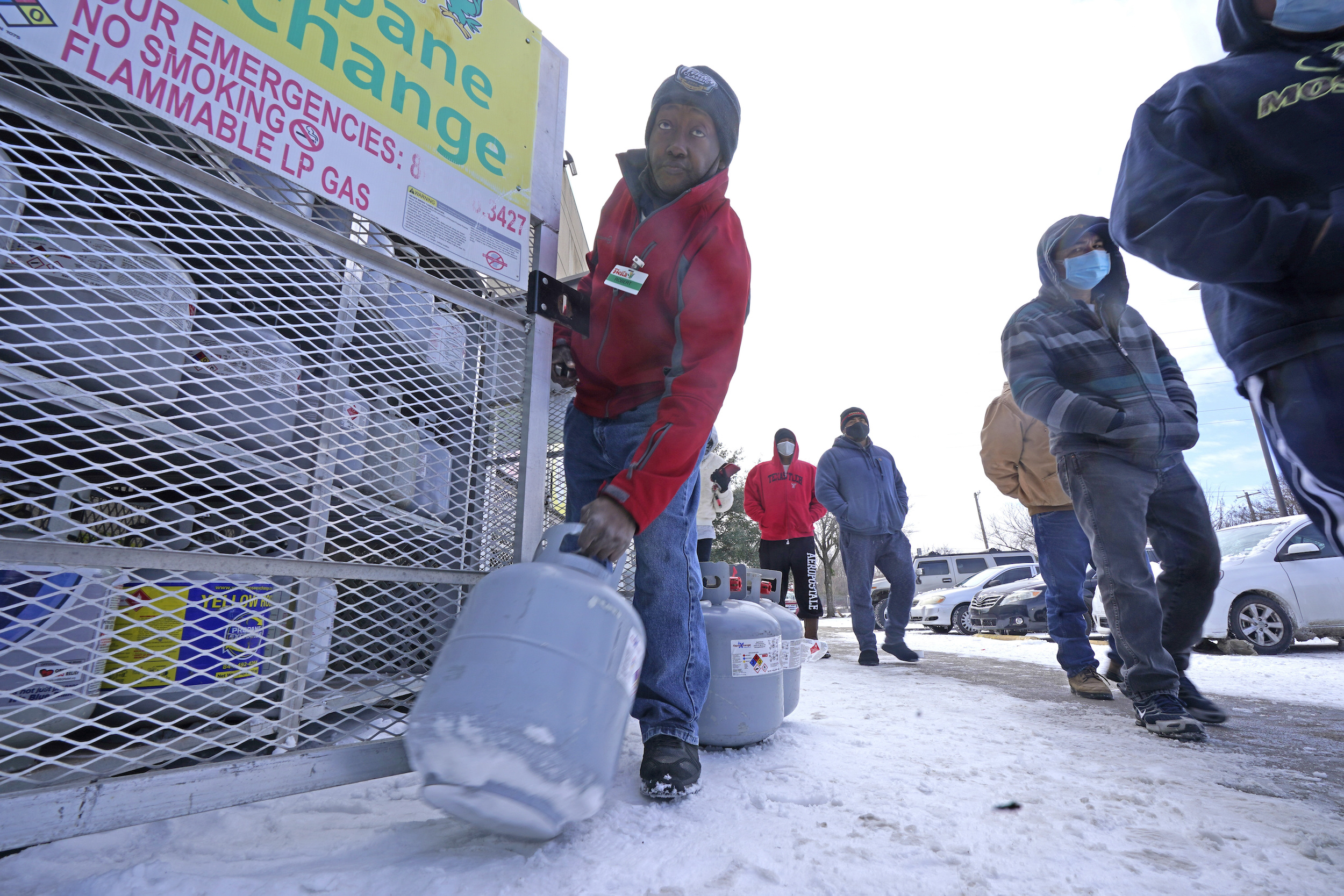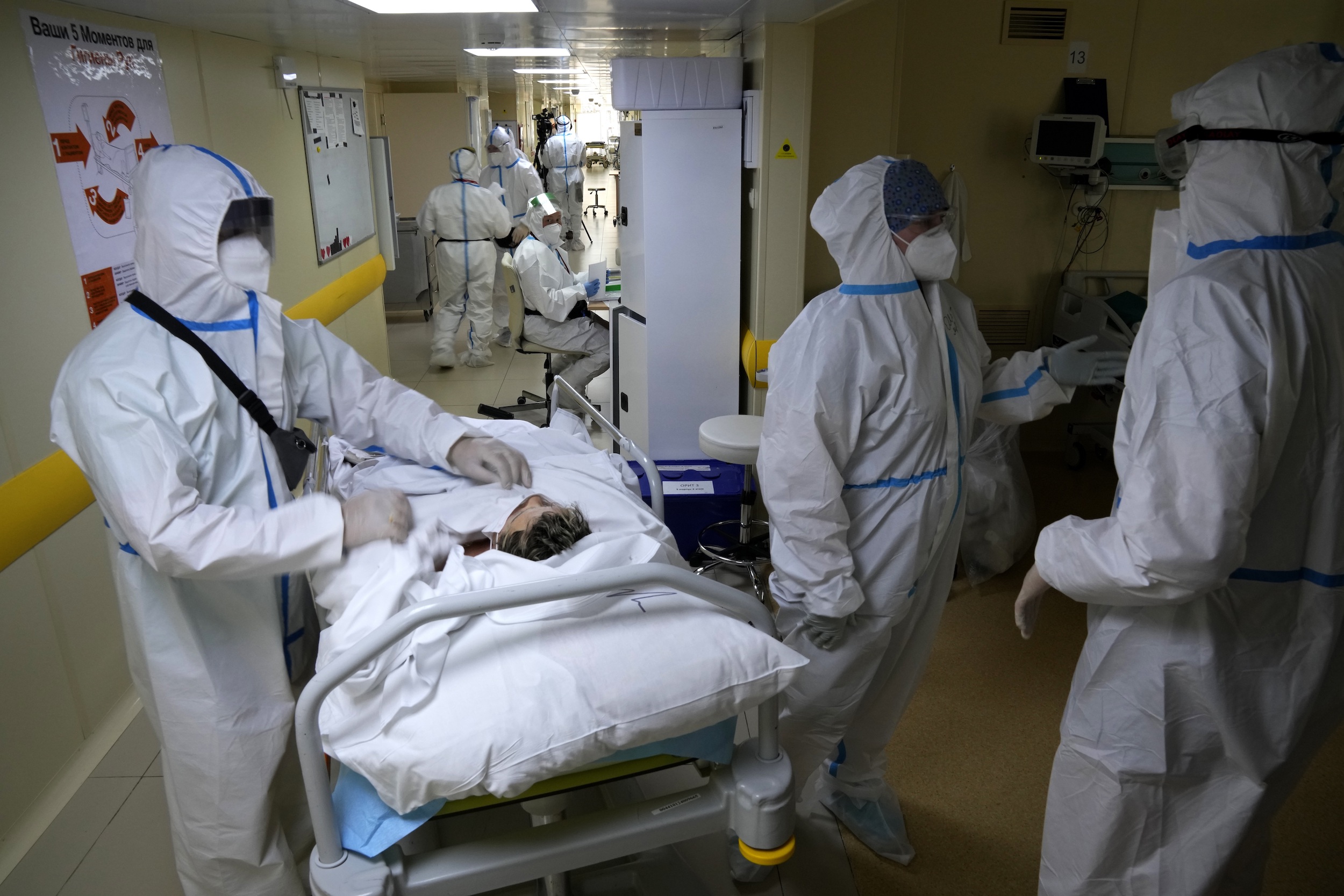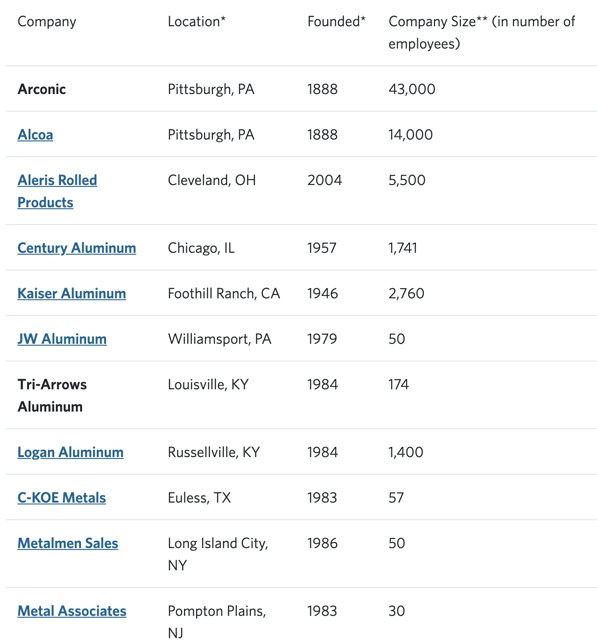 Covering COVID-19 is a daily Poynter briefing of story ideas about the coronavirus and other timely topics for journalists, written by senior faculty Al Tompkins. Sign up here to have it delivered to your inbox every weekday morning.
Covering COVID-19 is a daily Poynter briefing of story ideas about the coronavirus and other timely topics for journalists, written by senior faculty Al Tompkins. Sign up here to have it delivered to your inbox every weekday morning.
The U.S. Food and Drug Administration took a big leap toward making COVID-19 booster shots available to millions more Americans with three key decisions.
The FDA approved both the Moderna and Johnson & Johnson booster doses for people who are fully vaccinated. The FDA’s decision means seniors, people who are immunocompromised and adults who are in close contact with the public can get booster doses.
Because news about boosters has oozed through the system for months, the public may need a clear summary of where things stand. Here is what the FDA says about boosters:
The use of a single booster dose of the Moderna COVID-19 Vaccine that may be administered at least 6 months after completion of the primary series to individuals:
- 65 years of age and older
- 18 through 64 years of age at high risk of severe COVID-19
- 18 through 64 years of age with frequent institutional or occupational exposure to SARS-CoV-2
The use of a single booster dose of the Janssen (Johnson and Johnson) COVID-19 Vaccine may be administered at least 2 months after completion of the single-dose primary regimen to individuals 18 years of age and older.
The use of each of the available COVID-19 vaccines as a heterologous (or “mix and match”) booster dose in eligible individuals following completion of primary vaccination with a different available COVID-19 vaccine. To clarify that a single booster dose of the Pfizer-BioNTech COVID-19 Vaccine may be administered at least 6 months after completion of the primary series to individuals 18 through 64 years of age with frequent institutional or occupational exposure to SARS-CoV-2.
The only thing that stands in the way of the half-dose Moderna booster shots and the Johnson & Johnson boosters is a Centers for Disease Control and Prevention decision, which may follow the two days of talks that begin today.
Until yesterday, the FDA and CDC had not endorsed the mix-and-match concept even though there is promising data that shows mixing an mRNA booster (Pfizer or Moderna) with Johnson & Johnson’s vaccine provides significant protection for Johnson & Johnson patients. States have pressed for mix-and-match approval because it makes it easier logistically to administer boosters without regard to what brand of vaccine the patient initially got.
Vaccine for 5- to 11-year-olds weeks away, doctors, pharmacies and clinics will be key
The Biden administration is laying plans for FDA approval of vaccines for young children and a key part of the campaign will be to rely more on physicians, clinics and pharmacies than on mass vaccination centers.
Pfizer was the first to ask the FDA to approve its pediatric dose. The FDA meets Oct. 26. The CDC committee that would consider the application meets Nov. 2. If the process stays on track, vaccines could be available for children shortly after Halloween.
The vaccines for the youngest children took longer than expected because the FDA asked for expanded drug trials to be certain the vaccines do not produce unexpected side effects.
White House planners say the vaccines should be administered in settings that make children feel safe and comfortable, not mass vaccinations sites meant for adults.
Jeffrey Zients, President Joe Biden’s coronavirus response coordinator, told reporters, “Kids have different needs than adults, and our operational planning is geared to meet those specific needs, including by offering vaccinations and settings that parents and kids are familiar with.”
The bigger question may be whether parents will have their children vaccinated. The most recent survey by the Kaiser Family Foundation found that only a third of parents said they would jump on the chance. Almost as many said they would not get their children vaccinated or would only do so if they had to.
Note that the Kaiser survey was conducted before Pfizer and Moderna said early drug tests found the vaccines to be effective and safe.
Winter 2021 propane prices ‘headed for Armageddon’

Robert Webster pulls a full canister of propane for sale as customers line up to enter a grocery store Tuesday, Feb. 16, 2021, in Dallas. (AP Photo/LM Otero)
How’s this for a quote from research firm IHS Markit quoted in a Bloomberg report: “U.S. propane prices are so high and supplies so scarce that the market appears headed for ‘Armageddon’ during the depths of winter.”
To top things off, some weathercasters say we will probably have a colder than normal winter in much of the country this year thanks to the La Niña effect. To remind you what that means, look at the purple polar jet stream arrow that delivers colder and wetter winter weather:
Six million American households use propane. Lots of them are in rural areas where natural gas lines are not available.
The U.S. Energy Department says people using propane may pay 54% more for their fuel this winter.
Other heating fuels will also be more expensive. The Energy Department says:
- We expect that the nearly half of U.S. households that heat primarily with natural gas will spend 30% more than they spent last winter on average — 50% more if the winter is 10% colder-than-average and 22% more if the winter is 10% warmer-than-average.
- We expect the 41% of U.S. households that heat primarily with electricity will spend 6% more — 15% more in a colder winter and 4% more in a warmer winter.
- The 5% of U.S. households that heat primarily with propane will spend 54% more — 94% more in a colder winter and 29% more in a warmer winter.
- The 4% of U.S. households that heat primarily with heating oil will spend 43% more — 59% more in a colder winter and 30% more in a warmer winter.
A shortage of magnesium could cause significant manufacturing problems, from cars to aluminum foil to beer cans
I suspect you have never reported a story about magnesium. Nor have I. But the element is at the core of stuff you use every day, and there is trouble in magnesiumland.
The companies that supply magnesium and silicon say there is and will be a shortage of the mineral for a while and, because of that, you will notice higher costs and shortages of everything aluminum. Silicon and magnesium are used as alloying elements in the production of aluminum.
When mixed with aluminum to form an alloy, magnesium is used in everything from fuel tanks to seat frames and alloy wheels.
The Financial Times dives deeper into the problems. FT says China is curbing production and has “a near monopoly on the magnesium market,” and that stockpiles of the metal are “running dangerously low” across Europe.
In one week last month, magnesium prices rose 36%.
And, FT says, there is no substitute for magnesium in aluminum production. Since a third of all magnesium is used in the production of metal for the auto industry, if you run out of magnesium, you severely limit car production around the world. This happens as the auto industry navigates a computer chip shortage that has closed some car plants and cut production at others.
Think about the businesses around you that use aluminum: beermakers, window companies, construction companies and big commercial kitchens that go through tons of aluminum foil. Aerospace and airplane manufacturers, carmakers, computer companies and roofing companies are also all big users. Here are the biggest aluminum suppliers in the U.S. Some have giant payrolls.
The price of recycled aluminum rose last week while the prices of lots of other recyclable goods like plastic and cardboard fell.
Putin orders ‘non-work week’ as COVID cases rise

Medics wearing special suits to protect against coronavirus prepare to move a patient with COVID-19 at an intensive care unit at the Moscow City Clinical Hospital 52, in Moscow, Russia, Tuesday, Oct. 19, 2021. (AP Photo/Alexander Zemlianichenko)
Since pandemics involve the whole world, it is wise to keep on top of what is happening elsewhere. COVID-19 cases are spreading so fast in Russia that President Vladimir Putin is telling virtually everyone to stay home for a week starting Oct. 30. It is a reaction to the big increase in new cases in Russia, where a thousand people a day are dying from the virus. The Russian government has not exactly defined how the non-work order will unfold or whether people will be paid when they say home.
Brits reject new restrictions while cases rise
The British government rejected calls for a new lockdown in the face of a sharp increase in COVID-19 cases. The government says the United Kingdom may soon experience 100,000 new cases a day. New cases are growing by almost 50,000 now. The government said if needed, it would order a reinstatement of the lockdown that it relaxed in July.
COVID lockdown has lowered city air pollution
It is not true everywhere, but the National Oceanic and Atmospheric Administration says, “The widespread adoption of remote work may be keeping levels of air pollution lower than pre-COVID lockdown levels even after restrictions were lifted, a new study suggests.” The study says even when people were less socially distanced, traffic and the pollution it produces did not return to pre-pandemic levels:
The study found that in the spring of 2020, sudden declines in road traffic due to COVID-19 led to reduced NO2 pollution in U.S. cities nationwide. But when restrictions were lifted, NO2 pollution from transportation remained around 20% lower than pre-COVID averages in some cities through the end of the year.
“While it felt like things were getting back to normal, when we looked at the traffic data in various U.S. cities, it was clear traffic levels were still lower than pre-pandemic levels,” said co-author Brian McDonald, a research scientist at the NOAA Chemical Sciences Laboratory.
Even though lockdowns had been lifted by May, in most urban areas a significant portion of the workforce continued to work remotely,” said the study’s lead author Shobha Kondragunta, a research physical scientist at NOAA’s Center for Satellite Applications and Research.
“So, if employers continue to offer remote work policies, this could become the new normal in air quality.”
That time they implanted a pig’s kidney in a human, and it worked
We may look back on this day as an extraordinary moment in medicine, the day when surgeons at NYU Langone Health implanted a pig’s kidney in a human and the kidney functioned normally. The pig was genetically altered to increase the chance the organ might not be rejected.
90,000 of the 100,000 Americans awaiting a transplant are waiting for kidneys and there are not nearly enough donors. A dozen people a day die awaiting a transplant.
We don’t know how long a pig’s kidney would function in a human. Detailed research will emerge soon when the experiment is translated into medical journals. The New York Times found experts who warned that this may or may not be a watershed moment:
“There’s no question this is a tour de force, in that it’s hard to do and you have to jump through a lot of hoops,” said Dr. Jay A. Fishman, associate director of the transplantation center at Massachusetts General Hospital.
“Whether this particular study advances the field will depend on what data they collected and whether they share it, or whether it is a step just to show they can do it,” Dr. Fishman said. He urged humility “about what we know.”
Many hurdles remain before genetically engineered pigs’ organs can be used in living human beings, said Dr. David Klassen, chief medical officer of the United Network for Organ Sharing.
While he called the surgery “a watershed moment,” he warned that long-term rejection of organs occurs even when the donor kidney is well-matched, and “even when you’re not trying to cross species barriers.”
The transplant used the body of a woman who had recently died but was kept on a ventilator — with the enthusiastic support of her family — so doctors could use her kidneys in this experimental surgery. The woman had wanted to be an organ donor but her organs were not suitable for transplantation. After about a day, and after seeing the kidney function well, the doctors discontinued the transplant experiment.
NPR points out that pigs have been used in human medicine for some time:
Pigs have advantages over monkeys and apes. They are produced for food, so using them for organs raises fewer ethical concerns. Pigs have large litters, short gestation periods and organs comparable to humans.
Pig heart valves also have been used successfully for decades in humans. The blood thinner heparin is derived from pig intestines. Pig skin grafts are used on burns and Chinese surgeons have used pig corneas to restore sight.
We’ll be back tomorrow with a new edition of Covering COVID-19. Are you subscribed? Sign up here to get it delivered right to your inbox.











